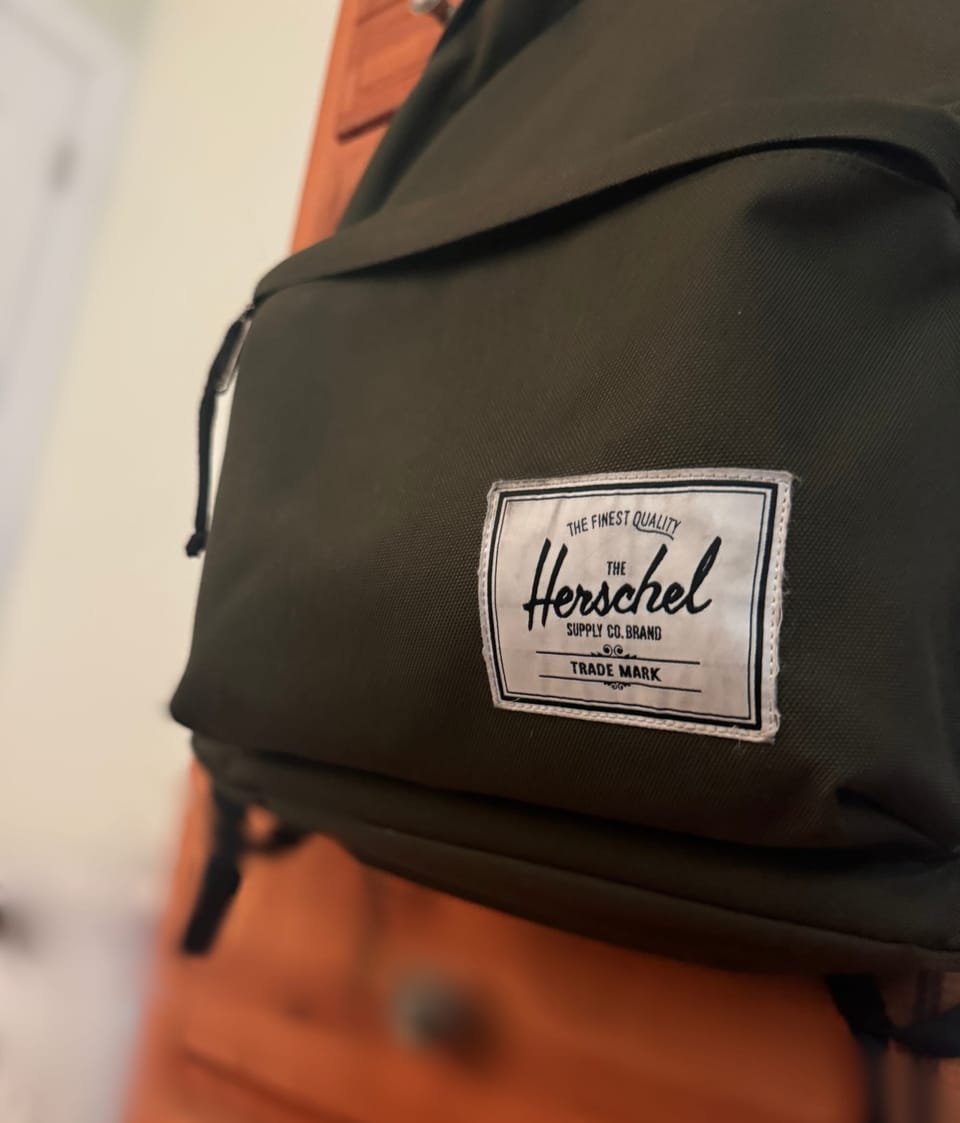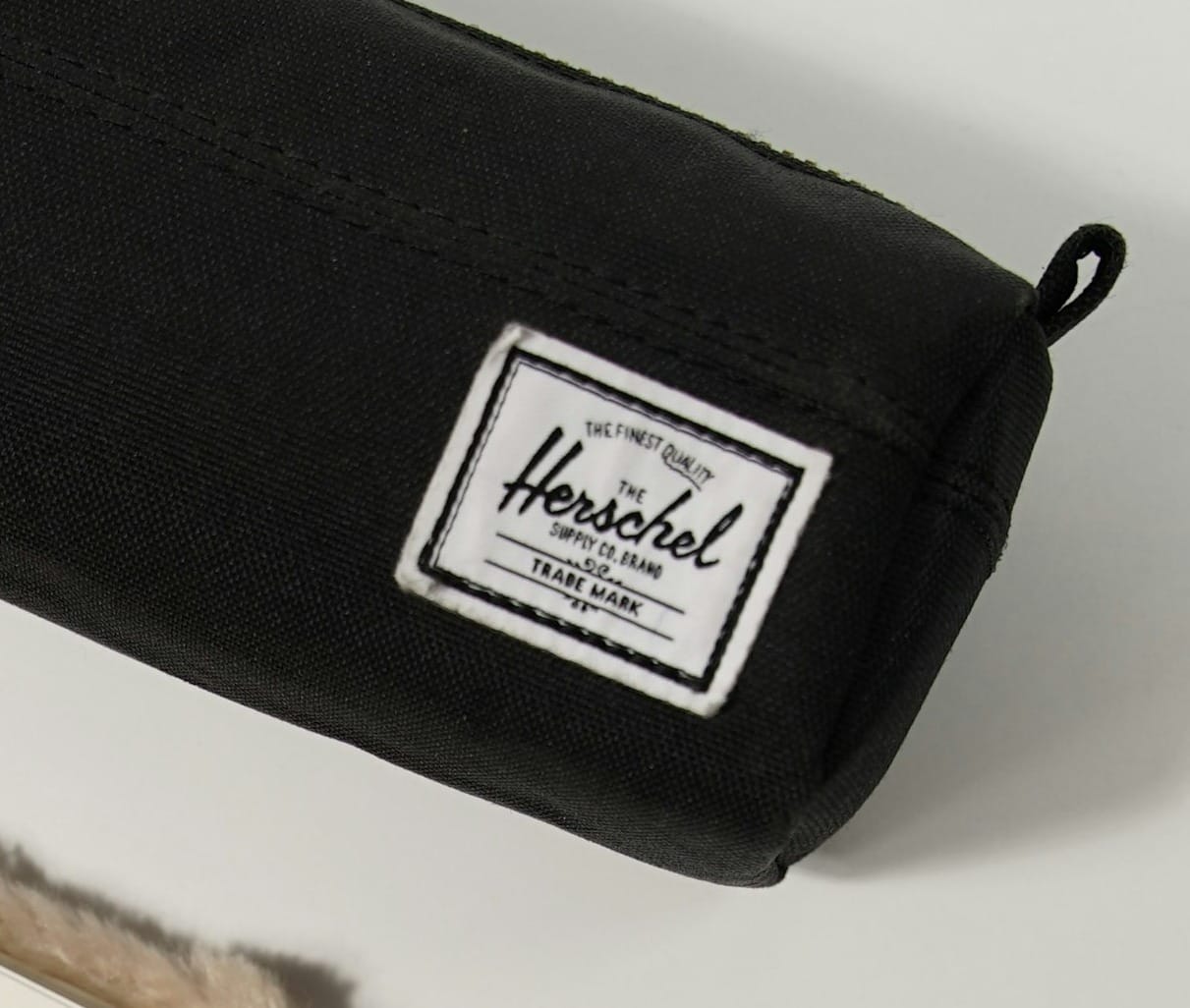Herschel Supply Co: From basic bags to worldwide tags

In 2009, brothers Jamie and Lyndon Cormack set out to create something they were passionate about—an innovative, stylish, and affordable backpack brand. Their inspiration stemmed from a personal frustration: backpacks, in their view, were either too utilitarian or too expensive. The idea behind Herschel Supply Co. emerged from this gap in the market and gave the time of day to create functional yet fashionable bags that wouldn't break the bank.
From its humble beginnings in Vancouver, Herschel grew to become a lifestyle brand synonymous with timeless design, functionality, and the spirit of adventure. But what really set Herschel apart was its ability to craft a story around its product, making it a must-have accessory item for consumers worldwide.
The Cormack brothers’ path to founding Herschel Supply Co. didn’t begin in the world of fashion. In fact, both had backgrounds in apparel sales and the sporting goods industry, with Jamie working in a sportswear sales agency and Lyndon as a Vans footwear sales manager. These experiences gave them unique insight into the fashion world and a deep understanding of consumer behavior. The idea for Herschel grew out of their shared frustration with the state of the backpack market.
At the time, backpacks were either expensive designer accessories or utilitarian products with no style. The Cormack brothers realized there was an opportunity to create high-quality backpacks that were both affordable and stylish, while reflecting a sense of authenticity. The idea was to create bags that could appeal to a wide range of people, from professionals to university students, and everyone in between.
Naming the brand Herschel was an essential part of the brothers’ vision. They chose the name from the small town of Herschel, Saskatchewan, where their family had deep roots. By tying the brand to their family’s history, the Cormacks added a sense of heritage to the brand. From the very beginning, this played a central role in Herschel’s rise. The Cormack brothers didn’t just want to create backpacks—they wanted to create a brand. They invested in strong visual identity, from look-books to website design and even in-store displays, ensuring that Herschel was seen as premium but accessible. The combination of modern design elements with vintage-inspired touches made Herschel bags not just functional but also fashionable.
The design of their first bag, the Little America Backpack, exemplified this philosophy. With its mountaineering-inspired design, faux-leather straps, and diamond ‘lash tab’ detailing, it combined classic backpack aesthetics with modern touches such as padded laptop sleeves and magnetic clasps for easy access. This mixture of function and style became the brand’s hallmark, appealing to the growing demand for backpacks that were both practical and stylish.
But beyond the physical design of the product, the Cormacks still worked tirelessly to create a brand narrative that connected with their target audience. The brand’s heritage feel and storytelling resonated with a consumer base that increasingly valued authenticity and loyalty in the products they chose.
Branding
Branding is one of the most powerful tools a company can wield. Herschel Supply Co. is a prime example of how a strong brand identity can transform a simple product into a global phenomenon. The Cormack brothers focused on creating more than just backpacks—they crafted a story. Herschel built an emotional connection with its customers. The brand’s carefully curated visuals, nostalgic elements, and consistent messaging helped it stand out in a crowded market. Herschel didn’t just sell bags; it sold a lifestyle that resonated deeply with consumers. The lesson here is clear: never underestimate the power of branding. A strong, authentic brand identity can elevate a product from just another commodity to an iconic name that people not only recognize but also emotionally connect with. You can see this in their logo.
Herschel’s success didn’t happen overnight, and the brothers faced several challenges along the way. One of the biggest obstacles was creating a scalable operation without sacrificing quality. The brothers initially handled every aspect of the business, from product development to sales, while also working with a team of designers to refine the brand’s aesthetic.
The Cormacks’ product development process was highly iterative. They didn’t just focus on designing visually appealing bags—they also worked on ensuring each bag was functional, durable, and versatile. This attention to detail and quality was key in setting Herschel apart from other brands. They made sure every bag had features that would appeal to practical needs, like reinforced stitching, adjustable straps, and water-resistant fabrics.
An early challenge that faced Herschel was managing production as demand grew. Initially, the Cormacks operated out of their apartment and worked with manufacturers in China to produce small batches of bags. This allowed them to maintain high-quality control while keeping production costs low. However, as the brand gained traction and sales increased, the need for more sophisticated logistics became apparent. They also faced challenges with retail pricing, finding the right balance between affordable and premium without alienating potential customers. Despite these challenges, Herschel's commitment to quality and style allowed the brand to overcome the hurdles and scale.

One of Herschel’s greatest strengths lies in its marketing strategy. Instead of relying solely on traditional advertising, the Cormacks used organic marketing through social media platforms like Instagram. They created a community around the brand, focusing not just on the product but on the lifestyle it represented. The brothers tapped into the growing demand for lifestyle-oriented brands by sharing high-quality imagery of their bags being used in everyday settings. They also integrated user-generated content, encouraging customers to share their own photos using Herschel bags. This strategy effectively built a global community of loyal customers.
Furthermore, Herschel invested in collaborations with other brands and cultural icons. These collaborations helped the company gain visibility in different circles and attract new customers. By partnering with high-profile names like Disney, Coca-Cola, and Major League Baseball, Herschel was able to tap into established fan bases and expand its reach beyond the traditional backpack market. These partnerships also reinforced the brand’s cultural relevance, ensuring that it wasn’t just a “bag brand” but part of a larger cultural movement.
By 2012, Herschel was already making waves in North America. As demand increased, the Cormack brothers expanded their distribution channels, moving beyond direct-to-consumer sales to wholesale partnerships with major retailers. Herschel’s rise was fueled by its strong retail partnerships with big-box stores and specialty boutiques, helping it establish a presence across the U.S. and Canada. By strategically placing their products in the right retail locations and continuing their focus on storytelling and authenticity, the Cormacks ensured that Herschel became synonymous with the lifestyle it represented.
Beyond DTC
Moving beyond a direct-to-consumer (DTC) model can open up a world of opportunities for brand growth, especially when done strategically. While DTC allows for greater control over the customer experience and higher profit margins, expanding into retail partnerships and wholesale distribution offers broader reach, brand exposure, and opportunities to scale. For brands like Herschel Supply Co., this move was key to establishing their presence on a global scale. By securing shelf space in major retailers and specialty boutiques, Herschel was able to strengthen its brand identity beyond its digital channels, reinforcing its status as a premium yet accessible lifestyle brand. This move not only increased visibility but also helped Herschel build a loyal customer base in new markets, solidifying its position as a global name. In essence, moving beyond DTC lets a brand expand its footprint, gain new customers, and reinforce its identity in physical spaces—enabling greater growth and more long-term success.
The company’s growth continued rapidly. In 2015, Herschel reached a massive milestone, selling 4.5 million units in just one year. This success was due in part to their ability to balance localization with scalability. They had expanded into international markets, including Europe and Asia, and had already solidified Herschel as a global brand. In fact, by 2016, Herschel’s products were sold in over 70 countries around the world. This rapid expansion was coupled with the opening of flagship stores in key cities, including Vancouver, the brand’s hometown.
Today, Herschel Supply Co. stands as one of the most recognized lifestyle brands in the world. The company’s backpacks, luggage, and accessories are carried by millions of customers globally, with over 70 countries seeing Herschel on store shelves. It’s a success story built on authenticity, quality, and creativity, proving that a carefully crafted product, combined with a strong brand story, can transform an idea into a global business.
Works Cited
- Herschel Supply Co. “About Us.” Herschel Supply Co., https://www.herschelsupply.com/pages/about.
- Deshpande, Jay. “How Herschel Happened: The making of the now-ubiquitous heritage backpack brand.” Slate, Sept 2, 2016.
- Clifford, Catherine. “Hyper-Growing Fashion Brand Herschel Supply Has Turned Away 500 Investors.” Entrepreneur, Jun 6, 2016.
- Bobila, Maria. “How the Brothers Behind Herschel Supply Expanded a Line of Bags Into a Global, Multi-Category Business.” Fashionista, May 28, 2019.
- Cartner-Morley, Jess. “Pack mentality: how Herschel reinvented the backpack.” The Guardian, Jul 8, 2014.
- Ramshaw, Emily. “Why Herschel Was Always Going to Be a Runaway Success.” Coveteur, Aug 23, 2018.
- Danforth, Chris. “A Visit to Herschel Supply HQ: Meeting the Founders.” The Hundreds, Aug 4, 2014.
- James, Darren. “The Power of Brand Storytelling: The Herschel Supply Co. Journey.” Marketing Week, 14 June 2018.

Member discussion